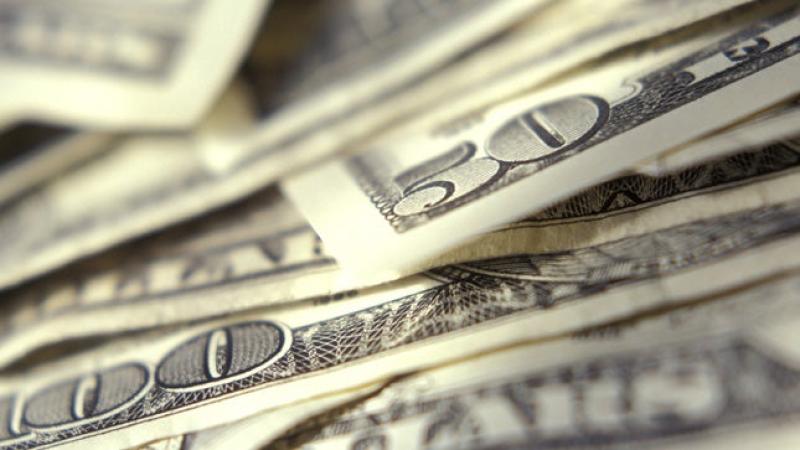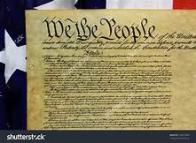A GOP-led edge: Red states see less unemployment, more economic growth
By: Kristin Tate


The record is clear. Want economic growth and prosperity vote Republican. Want a high tax. Place with a stagnant or declining economy and people fleeing, vote democrat.

Opinion polling isn’t everything. However, it often gives you a good barometer of the general shape of things, especially at the state level. As of mid-2019, every single one of the top 10 most popular governors in the country were Republicans, while eight of the 10 least popular were Democrats. Generally speaking, voters trust Republicans more than they trust Democrats to lead their states.
A deeper look at GOP-led states’ economic success explains why — but beyond the minutiae of simple policy, the bottom line is that electing a Republican often means increased growth and lower unemployment. An even stronger rule bears out the opposite when Democrats control the governor’s mansion.
Indeed, some correlations will always transcend state politics. But what becomes clear is that there is a strong statistical case that electing a Republican governor — even without a matching GOP statehouse — plays a significant role in states’ economic success. Look no further than the last election cycle paired with economic statistics, and this trend soon becomes clear.
State unemployment rates and GDP growth must be viewed relative to national averages. The average U.S. unemployment rate was 3.9 percent in 2018 and 3.7 percent in 2019. Strong employment growth at the state level is directly correlated with governorship. Among the 20 states with the lowest unemployment rates (three are tied for 20th, so there are 23 states ranking here), 17 had Republican governors prior to 2018. North Dakota, which has a 2.5 percent unemployment rate, prospers in large part because of its Republican leadership’s decision to embrace new hydraulic fracturing technology. As a result, nearly a third of job openings in the state remain unfilled longer than three months. And it’s not only high-skilled workers who benefit from strong job growth; fast-food workers in North Dakota earn multiples of the $7.25 federal minimum hourly wage, fetching as much as $20 per hour .
Among states whose unemployment rates increased the most last year, Democrats were most likely in charge. In states whose unemployment rates increased more than statistical noise (more than one-tenth of a percent), five of the eight have Democratic governors. Furthermore, among the eight states that saw the sharpest decrease in unemployment (0.5 percent or more) — Alabama, Colorado, Maine, New Jersey, Ohio, South Carolina, Utah and West Virginia — five have Republican governors. And only New Jersey had a Democrat in charge before 2018.
Meanwhile, U.S. GDP increased by 2.2 percent in 2017 and by 2.9 percent in 2018 . During the first three quarters of 2019, the average was 2.4 percent. When ranking GDP growth by state, the correlation between economic success and Republican governors becomes even more clear. Among the top 10 growing states in the second quarter of 2019 (the most recent detailed numbers available), only two of the 10 had Democratic governors prior to the 2018 election cycle. Among the four states that had growth above 4 percent, Texas (leading with 4.7 percent), New Mexico and Wyoming had GOP executives; Alaska was run by an independent. In fact, these states’ growth represent almost 10 percent of all economic growth in the nation during this period.
In the 10 states with the slowest GDP growth, Democrats have more to celebrate: The same figures show that eight of the 10 worst-performing states in Q2 2019 had GOP governors in the prior election cycle.
Sounds like a good case for a split ballot. However, six of those slowest-growing states (Michigan, Wisconsin, Illinois, Kentucky, Maine and New Jersey) have since elected Democrats to the statehouse. Since Kentucky’s election occurred in November 2019, we can’t factor that in. However, among the other states, GDP growth collapsed in 2019 after electing Democratic governors. In 2018 these states grew on average by 2.24 percent. In Q2 2019 it was a measly 0.92 percent annualized rate — a drop of 59 percent! Michigan’s growth rate fell from 2.7 percent to 1.1 percent, Illinois’ from 2.1 percent to 1.1 percent, Wisconsin’s from 2.5 percent to 1.1 percent, and Maine’s from 1.9 percent to an embarrassing 0.6 percent. In New Jersey (whose election was in 2017), it’s been cut by two-thirds, from 2.0 percent to an anemic 0.7 percent.
So, electing a Republican governor seems to give your state a fair but imperfect shot at growth.
What about states that added a GOP governor last cycle? There’s only one case in point here: Alaska’s governor’s mansion went from independent to red in 2018 — and growth followed. The state’s economy changed from a -0.3 percent contraction in 2018 to the third highest in the nation, at 4.1 percent in Q2 2019.
Numbers only tell a part of the story. The total sum of opportunity costs borne by high-tax states with Democratic governors and legislatures include incalculable damage to the working and middle classes. The states’ economic health (or lack thereof) further accelerates the magnet for millions of families fleeing taxation and regulation in blue states for better economic prospects in red states.
In 2020, 11 governors’ seats are up for grabs — and considering that seven of these are currently Republican, the residents of these states should heed the stark lessons of catching the blue wave in 2018.
Kristin Tate is author of the new book, “ The Liberal Invasion of Red State America ,” and an analyst for the nonprofit Young Americans for Liberty, a libertarian organization based in Arlington, Va., that promotes personal liberty issues in high schools, on college campuses and in politics.


As of mid-2019, every single one of the top 10 most popular governors in the country were Republicans, while eight of the 10 least popular were Democrats. Generally speaking, voters trust Republicans more than they trust Democrats to lead their states.
A deeper look at GOP-led states’ economic success explains why — but beyond the minutiae of simple policy, the bottom line is that electing a Republican often means increased growth and lower unemployment. An even stronger rule bears out the opposite when Democrats control the governor’s mansion.
Indeed, some correlations will always transcend state politics. But what becomes clear is that there is a strong statistical case that electing a Republican governor — even without a matching GOP statehouse — plays a significant role in states’ economic success. Look no further than the last election cycle paired with economic statistics, and this trend soon becomes clear.
State unemployment rates and GDP growth must be viewed relative to national averages. The average U.S. unemployment rate was 3.9 percent in 2018 and 3.7 percent in 2019. Strong employment growth at the state level is directly correlated with governorship. Among the 20 states with the lowest unemployment rates (three are tied for 20th, so there are 23 states ranking here), 17 had Republican governors prior to 2018. North Dakota, which has a 2.5 percent unemployment rate, prospers in large part because of its Republican leadership’s decision to embrace new hydraulic fracturing technology. As a result, nearly a third of job openings in the state remain unfilled longer than three months. And it’s not only high-skilled workers who benefit from strong job growth; fast-food workers in North Dakota earn multiples of the $7.25 federal minimum hourly wage, fetching as much as $20 per hour .
Among states whose unemployment rates increased the most last year, Democrats were most likely in charge.
If you want a great economy, vote Republican. If you want one that sucks like New York, Illinois, California, vote democrat.
GDP gains, like stock market gains, mostly benefit the already well-off. Likewise, unemployment rates are not a good measure either, because they don’t include the number of people who’ve given up trying to find a job. For example, in April of 2018, the number of jobs increased by 164,000, but the number of unemployed decreased by 239,000. What happened is that 164K of the 239K got jobs, the other 75,000 gave up trying to find a job. Those who are not trying are not counted in the unemployment figure.
A low estimate for the number that have given up trying to get a job is 6 million, high side is 10 million. Even at 6 million, this is about 5% of the possible workforce. Adding this to the unemployment rate gets you to a real unemployment rate of about 9%.
A better measure of a state’s success is the employment-population ratio. This is the percentage of people employed out of the total of those both employed and those who could be employed, but are not looking.
I have this spread sheet I use to see how different statics are related to the party(ies) running the state. I added the employment-population ratio and then sorted from best emp-pop ratio to worst. A surprising, although it shouldn’t be, result occurred. The top third of the chart is almost completely dominated by divided governments (GOP & Dem must cooperate), Dems dominate the middle third, and GOP has the bottom third.
I expected the GOP to dominate the states where the most people have given up looking for jobs because the GOP controls most of the poorest states. What I didn’t expect was that the divided government states would so completely dominate the set of states with the largest percentage of their populations working. My take-away is yin/yang, male/female, GOP/Dem, best success with both.
GDP growth collapsed in 2019 after electing Democratic governors. In 2018 these states grew on average by 2.24 percent. In Q2 2019 it was a measly 0.92 percent annualized rate — a drop of 59 percent! Michigan’s growth rate fell from 2.7 percent to 1.1 percent, Illinois’ from 2.1 percent to 1.1 percent, Wisconsin’s from 2.5 percent to 1.1 percent, and Maine’s from 1.9 percent to an embarrassing 0.6 percent. In New Jersey (whose election was in 2017), it’s been cut by two-thirds, from 2.0 percent to an anemic 0.7 percent.
So, electing a Republican governor seems to give your state a fair but imperfect shot at growth.
What about states that added a GOP governor last cycle? There’s only one case in point here: Alaska’s governor’s mansion went from independent to red in 2018 — and growth followed. The state’s economy changed from a -0.3 percent contraction in 2018 to the third highest in the nation, at 4.1 percent in Q2 2019.
Numbers only tell a part of the story. The total sum of opportunity costs borne by high-tax states with Democratic governors and legislatures include incalculable damage to the working and middle classes. The states’ economic health (or lack thereof) further accelerates the magnet for millions of families fleeing taxation and regulation in blue states for better economic prospects in red states.
The reason I proposed using employment-population ratio as a measure of a state’s success is because I think people are much, much more concerned with whether or not they have a job rather than with what GDP is doing or what whatever “total sum of opportunity costs” is. Your response it to quote GDP trends, and whatever the second thing is. I guess it’s a response to something.
You don’t think that state and local unemployment and wage rate statistics for their areas are accurate reflections of their reality?
One would think reading your post that it is the worst of times, that we are still in a Great Recession yet we know better.
Is this a post you meant for someone else? I make no statement even remotely related to your response.
Post #3 certainly looked really pessimistic and negative about today’s economic situation.